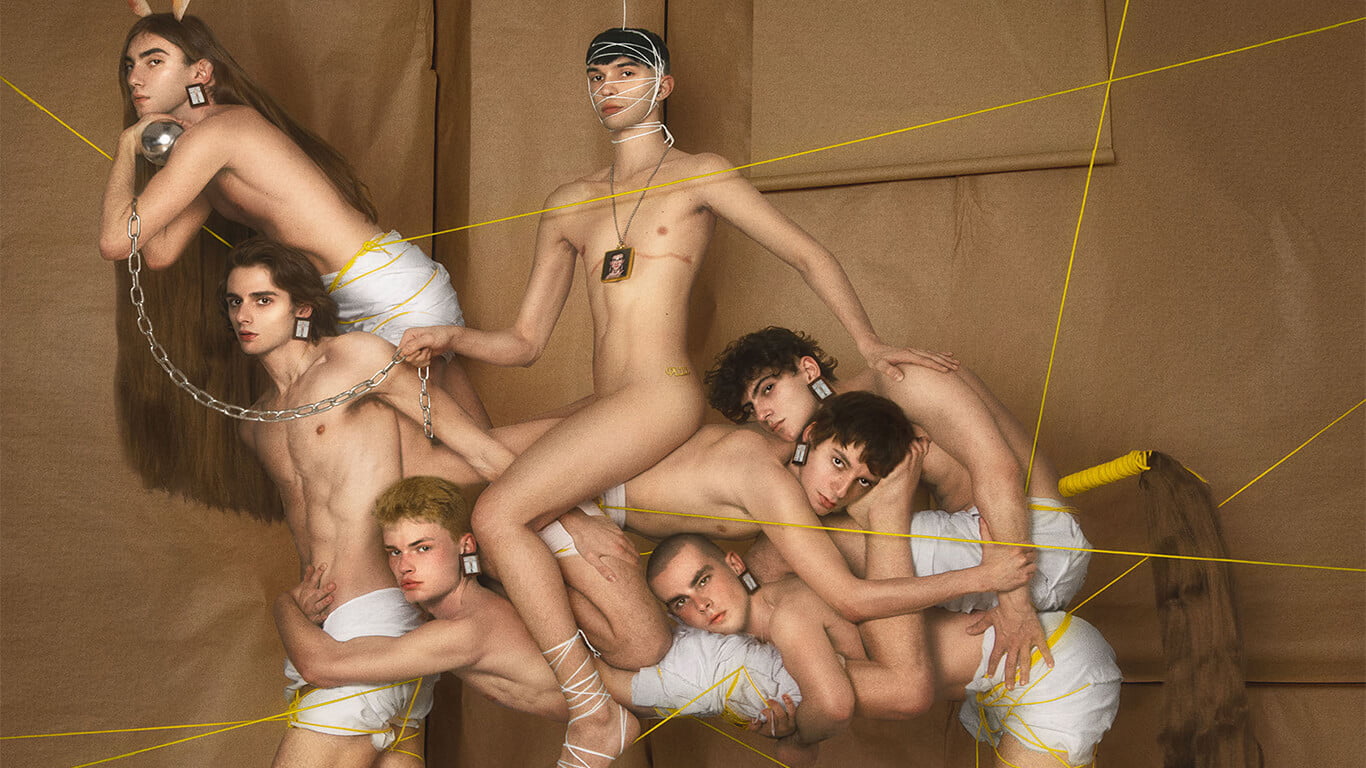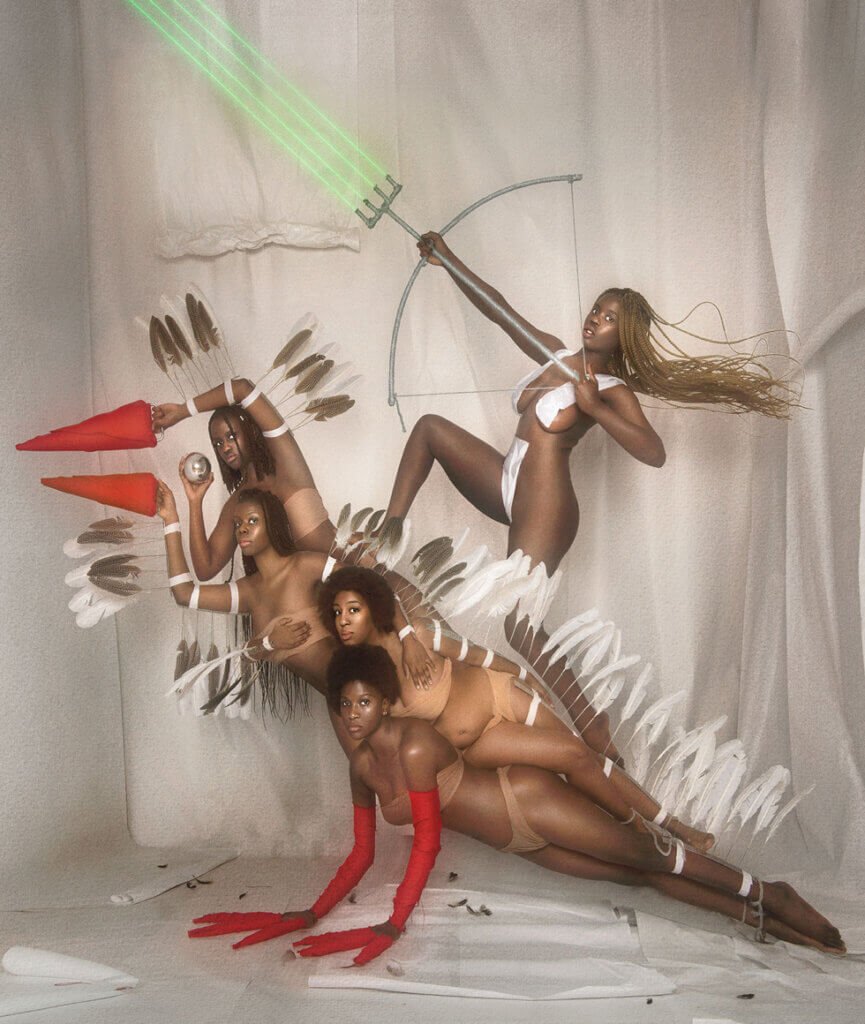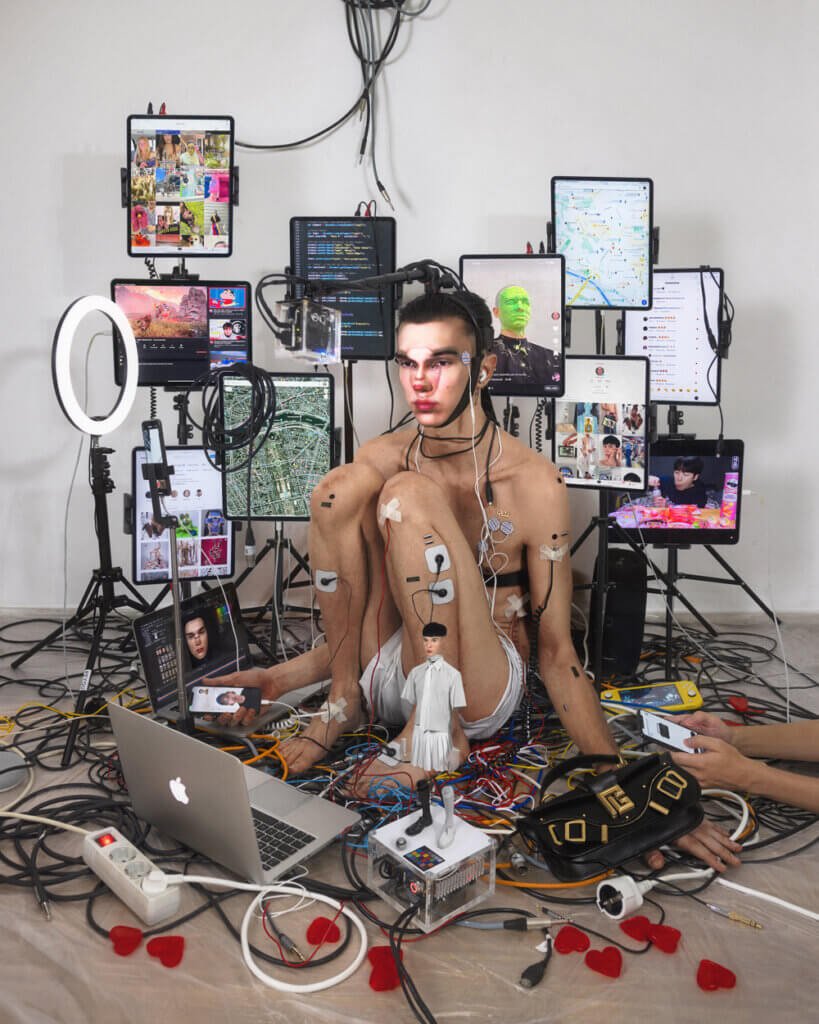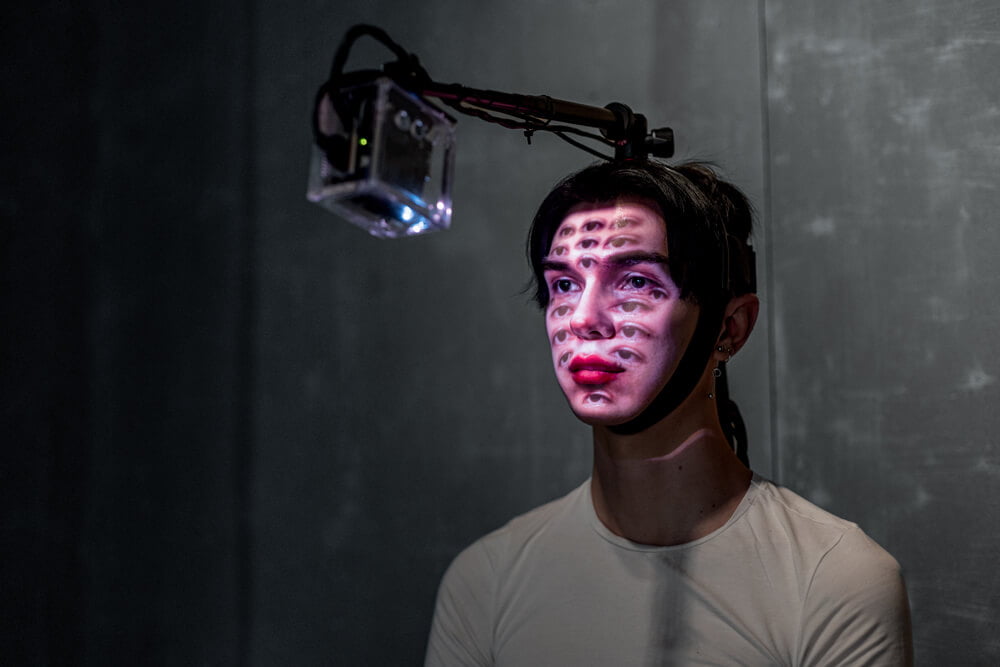filip custic: human product
April 7th to 24th April 2023
PARCO Museum Tokyo
15-1 Udagawacho, Shibuya-ku
Tokyo 150-8377
filip custic presents his first solo show in Japan: human product. The multidisciplinary exhibition expresses the essence of his artistic practice through a variety of different artworks, from prints to wearables, installation and performance, some of them commissioned especially for the occasion. Since the start of his career, filip custic has explored the relationship between our body, mind, and technology, and how these three elements interact to shape our identity. human product will be on display at PARCO Museum Tokyo from April 7th to 24th April 2023. His artistic creation focuses on internet culture, examining its symbols, formats and transformative abilities, through photography, videos, sculptures, and performances.
The artist’s universe shows uniformed and beautiful individuals, characters who show themselves behind masks, filters, photoshop touch-ups and their silicone doubles. custic’s subjects are homogeneous in their appearance while arousing an uncanny sense of tenderness.
In the human product exhibition, filip custic investigates human existence and our ability to update ourselves almost like an operating system (OS) while examining our tendency to create complex systems that give meaning to our lives. Capitalist culture triggers the artist’s imagination for this show, which opens a conversation focused on how consumerist culture attempts to turn us into “commodities” while proposing that our existence is more valid if it can monetised.
In human product I want to reflect on our tendency to become a sort of commodities that we update from time to time, under this self-imposed idea of being profitable”, custic explains Through this display, the artist raises pertient questions about the world we inhabit while examining the self-imposed social models we respond to by looking at the way our identities and bodies are shaped by technology.
custic skillfully explores these elements by aligning them with brands, economic models, commercial strategies and technological innovation. In human product, filip custic also plays with identity and contemporary collectable culture creating his own world of characters. The exhibition will feature a diverse range of media , including prints such estudio de guerrero derrotado, mujer pájaro or filip significa amante de los caballos, works in which the artist uses bodies as canvases for exchanging ideas “Human beings are egocentric: when we see a face, a body, we empathise. We see ourselves reflected”, explains custic.
The exhibition will feature a diverse range of media, including prints such estudio de guerrero derrotado, mujer pájaro or filip significa amante de los caballos, works in which the artist uses bodies as canvases for exchanging ideas “Human beings are egocentric: when we see a face, a body, we empathise. We see ourselves reflected”, explains custic.
WEARABLES SERIES
human product features wearable unique pieces created by the artist: bolso de pantalla series and face-mapping. These wearable artworks were inspired by custic’s’ desire of documenting and portraying the present and the near future, entwining reality with the virtual. custic proposes an alternative world view – predicting that humans will organically evolve to bionic versions of themselves.
Through these artworks, he uses his own body as the canvas for experimentation and becomes part of the evolution. In bolso de pantalla series, handbags are taken a step further and a screen is incorporated, symbolizing the delirium of our present. As a former marketing student custic became increasingly self-aware of the brands we carry and align ourselves with, i.e. carrying a handbag became an instant walking advertisement.
Through these series, custic repurposes the idea of a handbag and uses these artworks to communicate his own messages own messages, like quantum love. Through face-mapping, custic brings filters to reality, predicting a future where humans could wear face modifying ARs. The artist takes this idea as far as he can using the innovative technology and inviting his audiences to open debate about the impact of technology on the human body and identity.
DOLLS AND PERFORMANCE
The exhibition also features a green screen room consisting solely of unseen artworks. These pieces include three sculptures such as cabeza yin, zzz and human product as well as an installation comprising two videos. The sculptures are inspired by BJD and doll culture, but also by the collectible world and the obsession around it. Through these works, custic distorts the idea of individualism by creating two helmets – molds of his own head – and a lookalike doll and therefore turning himself into a collectable product.
Masks play an important role in custic’s practice as a way to distort one’s image and as a way to bring himself closer to a, a virtual avatar. “Japan is the main developer of the referred cultures, thus, it becomes the perfect scenario to make the avatar and the collectible worlds come together in one exhibition”, explains custic. During the exhibition days, the artist will create an exclusive performance at PARCO Museum. This performance will relate to internet culture and capitalism, key issues in human product, and will involve his unreleased work cabeza yin. In 2023, the filip custic held his first solo show in Japan at PARCO Museum in collaboration with Onkaos, an artistic support program from Colección SOLO, an international contemporary art hub based in Madrid (Spain).
©2023 filip custic, PARCO Museum









